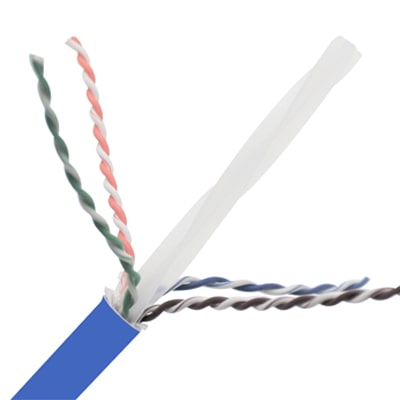What is Alien Crosstalk?

Digital technology requirements grow continuously, demanding ever-higher data transfer speeds, data throughput and information security. As we demand more of our networks, the issue of signal integrity becomes more critical.
Crosstalk is a term originally from the telephony sector and refers to the superimposing of a signal from one pair into an adjacent pair within the cable, or between adjacent cables. Crosstalk reduces the signal strength and data transfer speed, can lead to connection errors and data loss, and limits the reliability and length of a data network link.
There are several different types of Crosstalk: on powered networks, PowerSum Crosstalk is the Crosstalk on a single pair from the combined effect of all other pairs. Near-End Crosstalk (NEXT) refers to Crosstalk near the transmitter end of the link specifically (i.e. PSNEXT) – usually the termination points at the patch panel and work area outlet. Alien Crosstalk – abbreviated as AXT – is the Crosstalk in one cable from the combined effect of all cables adjacent to it in a bundle.
AXT is usually measured with respect to a bundle of 6-around-1 cable bundles, but as testing would require multiple cables to be tested simultaneously, this is not generally a requirement after installation. Compliance with International Standards is usually met by design.
AXT becomes an issue when transmission speeds exceed 300MHz, and it can significantly degrade the performance of 10G Base-T installations. As Category 6 cable is only rated up to 250Mhz, this was one of the main drivers for the development of C6A. In comparison to Category 6, Category 6A cable has more controlled twists in each twisted pair, has a better control over the balance of the signal and features an isolation wrap similar to shielding, even in UTP versions. These innovations enable Category 6A to carry 10G Base-T traffic over 100m, a significant improvement over C6.
While early C6A cables were often bulky and hard to handle, modern versions have overcome these challenges. C6A-specific multipair tools enable quick and consistent terminations with only minimal additional time required to dress the isolation wrap. Drain wires, grounding and bonding are not required. C6A cables over 24 AWG also offer better heat dissipation qualities, which makes it ideal for higher-powered Power over Ethernet applications. Ultra-slim 28 AWG variants are also available for applications like data centers where space is at a premium.
Overall, even UTP Category 6A systems provide significant performance improvements over Category 6. However for the most demanding applications, fully shielded systems offer even better ANEXT protection. Fully shielded systems minimize interference from EMI as well as high frequency RF and wireless signals. Shielding also helps keep signals in the cable, preventing AXT in other nearby devices or links.
Category 6A supports 10G Base-T applications at 500MHz and up to 100m per link. Category 6A can be used for all types of PoE, and is recommended for Type 3 / Class 5 and above due to its superior heat management qualities. Currently, international Standards recommend the use of Category 6A in new installations in order to future-proof your data networks, and Molex strongly recommends fully shielded cabling systems for 10G Base-T applications.
More information
Find out more about our new second generation C6A UTP range here or explore the full range of C6A products here
Read more:
Overview of Copper Cabling Categories (CSP account required)
